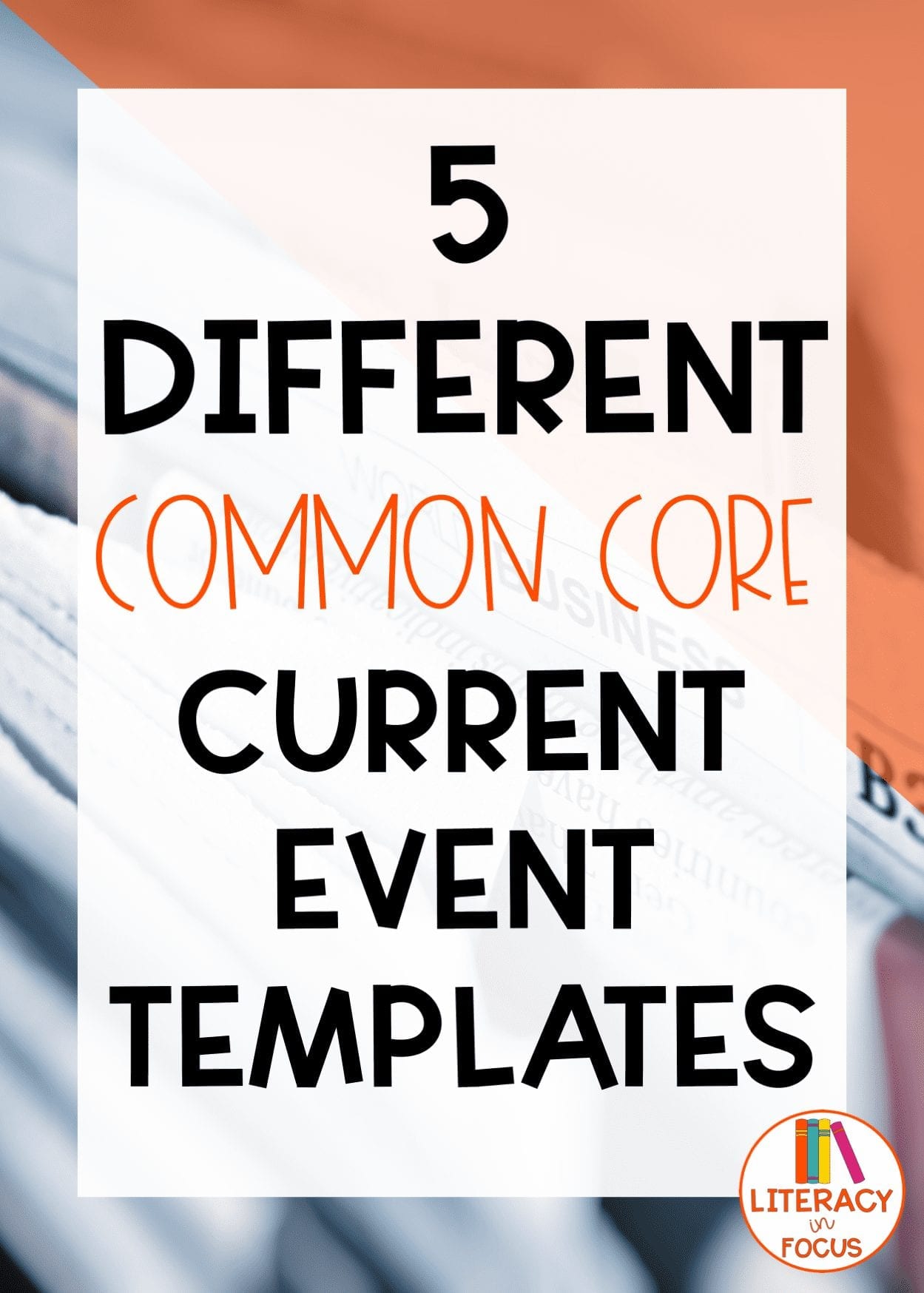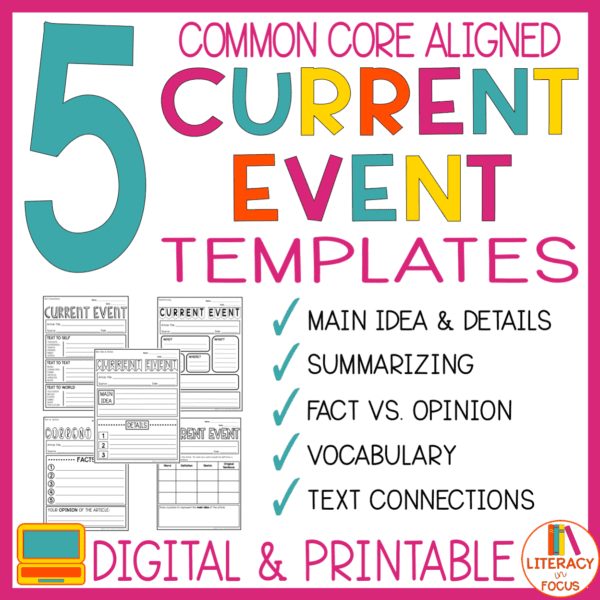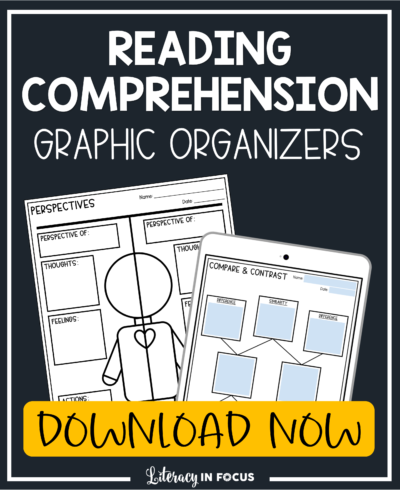Common Core Aligned Current Event Templates
Implementation of the Common Core State Standards brings with it a greater emphasis on informational text. In turn, teachers are left with the imposing responsibility of providing increased opportunities for students to engage with authentic nonfiction. Current event assignments are a great way to bridge the gap. Students are able to demonstrate their knowledge of a nonfiction text with a written response to a relevant news article. Listed below are five different options for aligning your current event templates to meet the Common Core State Standards.
Main Idea & Details
Locating the main idea of a text and how it is supported by the key details in the article is a clear example of how a current event report can easily align with the Common Core State Standards. Identifying the topic, main idea, and supporting details helps students understand the point(s) the writer is attempting to express. Additionally, understanding the interdependent relationship between the main idea and supporting details will increase reading comprehension. The news article and corresponding current event assignment provide a way for students to demonstrate their ability to locate the central idea and how it is conveyed through particular details. Simplifying the current event template to solely focus on main idea and details gives students the time and space to eventually master that particular skill.
Summarizing
The Common Core State Standards require students to provide a summary of the text that is distinct from personal judgements and opinions. In order to do this effectively, the current event template should be set up to guide students through the process. Students should begin the summary writing process by locating the 5Ws in the text (who, what, when, where, and why). After recording the 5Ws, students are prepared to turn that information into a succinct summary. Current event assignments are a great alternative for reinforcing summary writing skills, especially when it comes to informational text.
Vocabulary in Context
Determining the meaning of general academic and domain specific words or phrases is a major component of the Common Core State Standards. The scientific research on vocabulary instruction reveals that most vocabulary is acquired incidentally through indirect exposure to words, which is what is likely to happen when students start reading a variety of nonfiction articles. Students need to be able to extrapolate the significance or meaning of unknown words using context. Requiring students to locate and define new words as part of their current event assignment will help them develop the skills needed for decoding unfamiliar terms.
Fact vs. Opinion
According to the Common Core State Standards, students need to be able to explain how an author uses reasons and evidence to support particular points in a text. In order to do so, students need to be able to clearly delineate between facts and opinions. It is important for students to be able to trace specific claims in the text, and distinguish between claims that are supported by reasons and evidence from claims that are not. Paring down the current event template for students to solely focus on facts and opinions stated in the article provides students with ample opportunity to develop the skills necessary for the integration of ideas presented in the article.
Text Connections
An additional way for students to integrate ideas presented in the article is for them to make authentic connections with the text. The Common Core State Standards require students to integrate information from multiple perspectives on the same topic in order to write or speak about the subject knowledgeably. Connecting the text to a concrete idea or experience will assist students with the integration process. Making text connections, whether it be text-to-self, text-to-text, or text-to-world, is an active reading strategy that can lead to an increase in reading comprehension. Connecting the text with multiple reference points will provide the student with a strong foundation from which he or she can then evaluate the information being presented.
Hopefully, the five ideas listed above provide you with a clear jumping off point when it comes to aligning your current event assignments to the Common Core State Standards. Current event article templates do not have take on a one size fits all approach. Varying the reading comprehension skills with different types of templates is a great way to build foundational literacy across academic content areas. Additionally, requiring students to evaluate current events not only provides students with a relevant way to engage with the text while meeting the standards for reading nonfiction, it also builds and strengthens reading comprehension skills.
Click on the image or link below to download ready-to-go current event templates aligned to the Common Core State Standards. Five different templates are included (Main Idea and Details, Summarizing, Vocabulary in Context, Fact vs. Opinion, and Text Connections). Along with a the printable PDF version of the templates, digital versions are also provided as an option for those of you that have access to technology in your classroom.
Click here to download the printable and digital Current Event Templates from Literacy in Focus.



